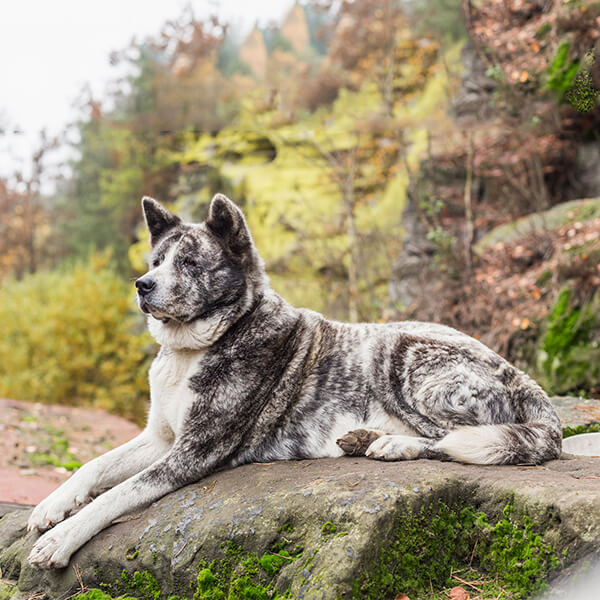A crate can be a very useful tool for an Akita. While these dogs long for human companionship and do not like spending time alone, they do need training and a safe place for those times when you cannot be with them.
When selecting a crate, always consider the size of your Akita. He will need enough room to stand and turn around comfortably; however, you do not want him to have excessive space, as this will detract from the purpose of a crate: training and providing a “den”-like atmosphere.
If your Akita is a puppy and you plan on using a crate with him as he grows, you’ll need to ensure that it fits his growing body. To avoid purchasing several crates, invest in one that features a divider that can be used to adjust the amount of space he has inside, such as this Double Door Folding Metal Dog Crate.
A bed provides a warm, comfortable, and supportive space for your Akita to sleep. Choose something that will afford him enough space to spread out, as this breed likes his room while he sleeps. A bolster or pillow-style bed should work well. If he is showing signs of hip dysplasia, an orthopedic bed, like this Gray Orthopedic Dog Bed, is a good option, as it will offer him the support he needs.
Though your Akita will prefer being inside with you, if he is going to be outside for long periods of time, make sure you provide him with a dog house. This structure will protect him from the elements and provide a safe haven outside. A dog house should fit the size of the Akita and offer enough room for him to move about comfortably. It should also offer features that will ensure his comfort. For instance, if you live in an area that receive a lot of rain, such as Washington or Oregon, an elevated dog bed will keep him up off the ground. Operable windows are also a great feature, as they provide much-needed airflow. Some excellent options for dog houses for your Akita include the Petmate Indigo Dog House and the Tuff-N-Rugged Dog House.

